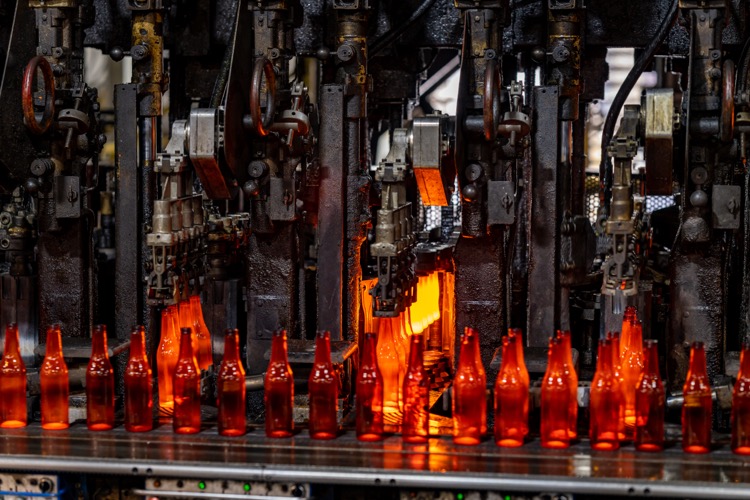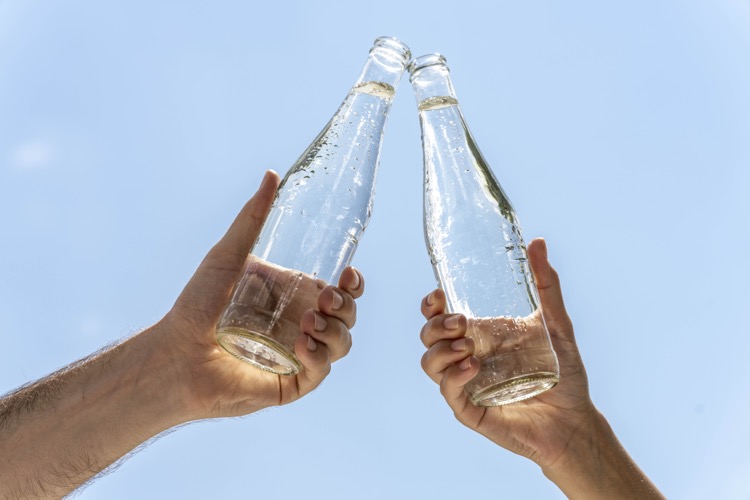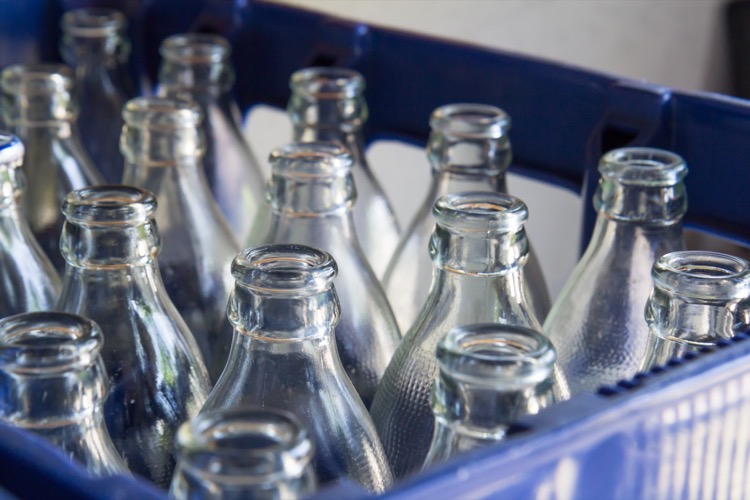There’s a lot of economic uncertainty as we enter the end of 2022. Inflation is rising globally. Energy concerns loom across Europe. COVID-19 variants and the trajectory of the pandemic are tough to predict.
Brands and consumers alike are watching the situation closely. Consumer spending habits, preferences and behaviors could shift depending on their bank accounts, and brands want to make themselves indispensable.
Past periods of economic instability can provide clues that help brands plan during this uncertain economic climate. One thread that stands out as we look at previous situations is that food and beverage brands who bet on the value of glass packaging during tough times are rewarded.
Cautious Consumers Drawn to Affordable Indulgences
Many consumers are changing their spending habits by applying different strategies to manage rising prices.
Swapping meals out for meals in is one of the strategies. In a June Nielsen IQ consumer outlook survey, 40% of US respondents reported they plan on spending more on groceries while 42% reported they plan on spending less on dining out.
Globally, consumers plan to continue with the new-found habits that were accelerated by the 2020 pandemic, especially cooking more meals and mixing cocktails at home. For these at-home experiences, consumers still want restaurant-like meals and aspire to drink less but better quality. They want ingredients such as sauces, seasonings, and spreads. They’re creating cocktails with wine and spirits. The categories that cautious consumers lean into during uncertain times are the categories where brands heavily rely on glass packaging for its inert and protective nature and its brand-building power.

While many will choose to delay big luxurious purchases, like boats or international travel, they’ll still treat themselves to high-quality food and drinks. In a recent article, Paul Martin, KPMG’s U.K. Head of Retail, told CNBC: “Whilst it’s true that some consumers are having to increasingly turn to value products and watch every penny, it is also the case that other consumers are nervous about the economic outlook but still have money to spend and are in essence trading down to premium products.”
Consumers are still sticking to certain premium brands as “affordable indulgences.” This is especially true for alcoholic drinks. According to Goldman Sachs, beer and spirits volumes in the U.S. have shown little correlation with economic growth: “Beer and spirits are an affordable luxury and are a small enough portion of total spending so that volume is not likely to decline significantly.”
Alcohol isn’t the only small luxury consumers are willing to spend on during economic uncertainty. Mintel data shows that between 2007-2009, new product design (NPD) activity with a premium claim grew across almost every food and non-alcoholic beverage segment.
Spirits Brands Double Down on Premiumization
During economic uncertainty, brands also look for areas where they can spend less. But large players in the U.S. spirits market say they know the value of premiumization during tough times, and they’re doubling down on their strategies.
Beam Suntory saw value sales grow at twice the rate of volume sales as the company’s focus on premiumization continued to gain traction.
“The fact that we were able to deliver these strong results in a challenging period underscores the resilience of our markets, quality of our brands, and the significant impact on our premiumization strategy,” said Albert Baladi, president and CEO of Beam Suntory.
Another top player, Brown Forman, saw tremendous growth and resilience in 2022’s fiscal year. Whiskey, bourbon and tequila saw 20%, 17% and 22% growth in net sales, respectively. In a recent release, Brown Forman predicts a strong 2023 fiscal year ahead, partly based on consumer demand. Recently, the company released two new premium whiskey additions to its core range: Jack Daniel’s Bonded and Jack Daniel’s Triple Mash.
Glass is the clear leader when it comes to spirits packaging – a category whose volumes grew by 5% in the U.S. in 2020 according to the IWSR data. This momentum is expected to continue in the next 5 years with premium-priced brands, especially growing ahead of the overall category as consumers’ desire to “drink better” continues.
Glass Packaging is a Valuable Ally
It’s clear consumers still plan to spend – they’re just looking to spend differently. They’ll rely on brands that help them build affordable, luxurious experiences in their own kitchens and living rooms. People love how glass elevates any moment, from a Friday date night at home to joining friends to stream football on Sundays.
Glass packaging is a valuable ally for brands who want to make long-lasting, brand-building relationships with consumers, even during tough times. Choosing glass is an investment that pays off.


















